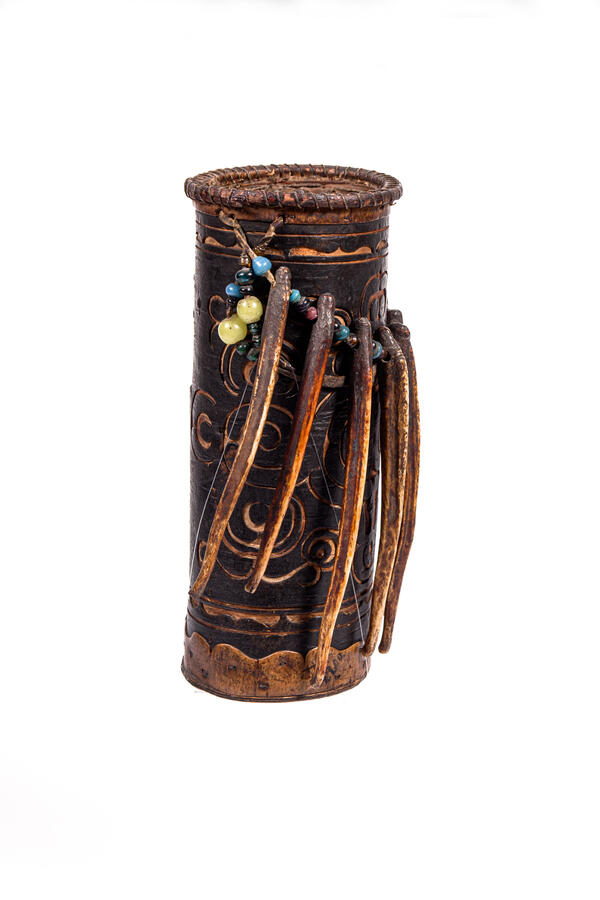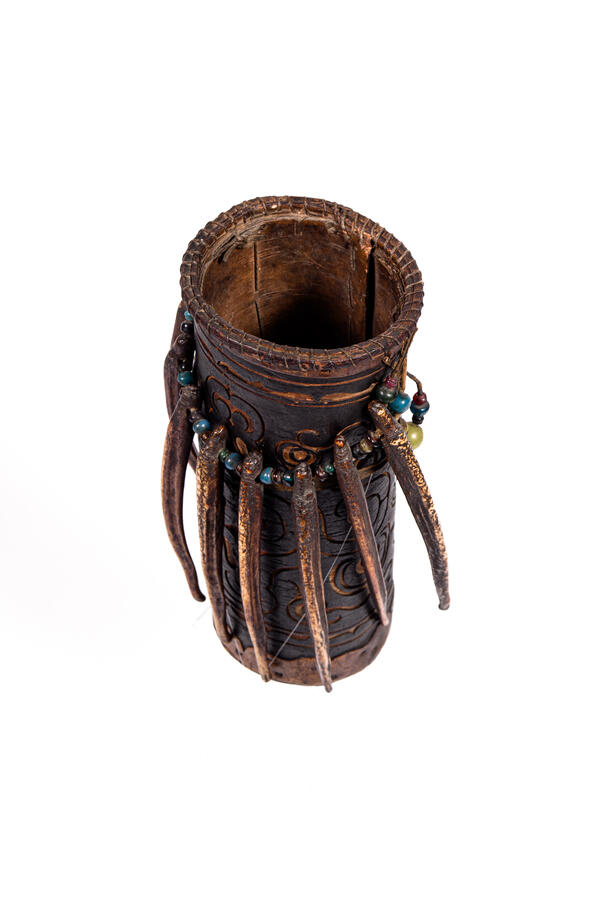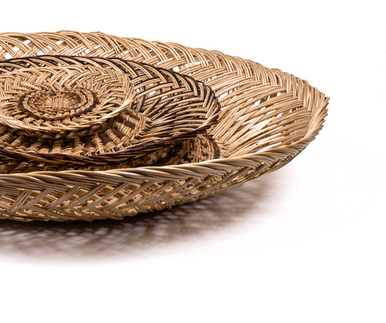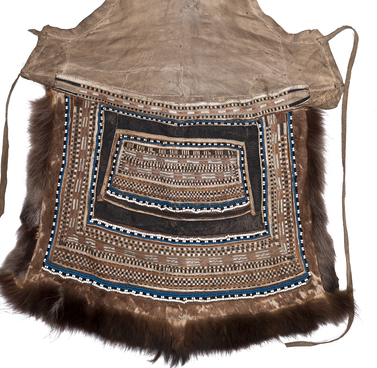The Sufalyagi-Mafak-gilyamani box entered the museum’s collection thanks to the traveler, geographer, ethnographer, writer, explorer of the Far East Vladimir Arsenyev (1872–1930) in 1911. He discovered this item in the area of the Nakhtokhu River. The craftsman who made this birch bark box, tinted it black, decorated it with leather thread with glass beads and eight bones from the sexual organ of a bear. The presence of these bones and the carved pattern on the outside allowed to imply that this container was intended for ritual use.
According to Udege beliefs, man occasionally had to communicate with the spirit of the ancestor, the bear, by inviting it to visit, that is, by killing the animal and eating its meat. Preparation and the process of hunting required observation of numerous beliefs and prohibitions. For example, it was forbidden to throw out garbage from the house or take out the fire before the hunter returned from hunting.
After killing a bear, hunters made a notch on the trunk of a tree, on the eastern side at knee height. The bear’s eyes were placed on it so that its soul could see how people observed taiga laws. The Udege people assumed that the real communication with the spirit of the ancestor begins only when eating bear meat.
Each hunter arranged a so-called bear feast (talasiyini) after the hunting. It was attended mainly by men from the family of brothers-in-law and fathers-in-law. Women were allowed to eat bear meat only from the inside of the hind legs. One of the prohibitions also concerned the eating of boiled meat: it was forbidden to touch it with hands and it had to be eaten with sticks.
The researchers assume that there was a special vessel or box, such as this exhibit, for these sticks. When eating, the Udege people wore a special leather apron and made sure that not a single drop of fat or crumb of meat fell to the ground. If this happened, the place where the fat had fallen was carefully scraped off and cut out with a knife.
The most important part
of the bear feast was the collective eating of the animal’s head: meat and
brain. Only men participated in this rite. As Vladimir Arsenyev noted, when the
meat from the bear’s head was eaten, a small hole was punched in the animal’s
skull and everyone was given a spoonful of brain. At the end of the feast, the
ritual of burying the bones and skull of the beast was rigorously observed.







